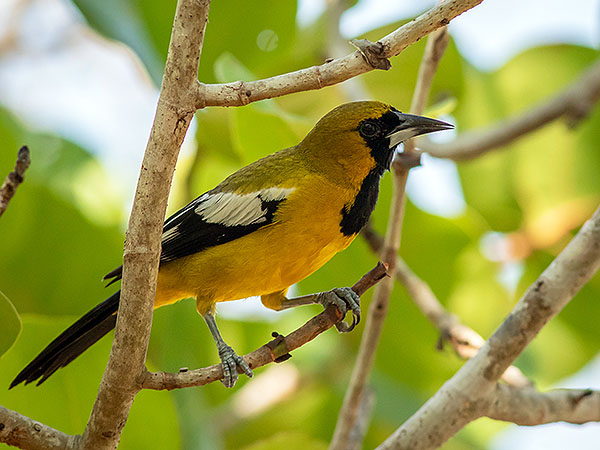Grand Cayman Oriole (Icterus leucopteryx ssp. bairdi)
This bird, as its name implies, was restricted to the island of Grand Cayman while the nominate race is endemic to Jamaica.
The bird is mainly golden yellow colored with a greenish hue; its face and throat are black; the wings are largely white and black and the tail is black as well; the beak and the feet are grey.
The last birds were collected in 1911 by Wilmot W. Brown (at a time when the Governor of the island specifically forbade him to hunt any birds peculiar to the island, by the way), and the collector wrote the following statement.:
“Collection contains 17 specimens of the very rare Icteurs bairdi – the rarest bird I ever hunted!” [1]
*********************

Photo: Frode Jacobsen
https://www.inaturalist.org/people/frodejacobsen
https://creativecommons.org/licenses/by-nc/4.0/
*********************
References:
[1] Kevin B. Clark: Wilmot W. Brown: one of the most prolific collectors of the vertebrate fauna of the New World. Bulletin of the Museum of Comparative Zoology at Harvard College 126(6): 347-378. 2020
*********************
edited: 05.01.2024
